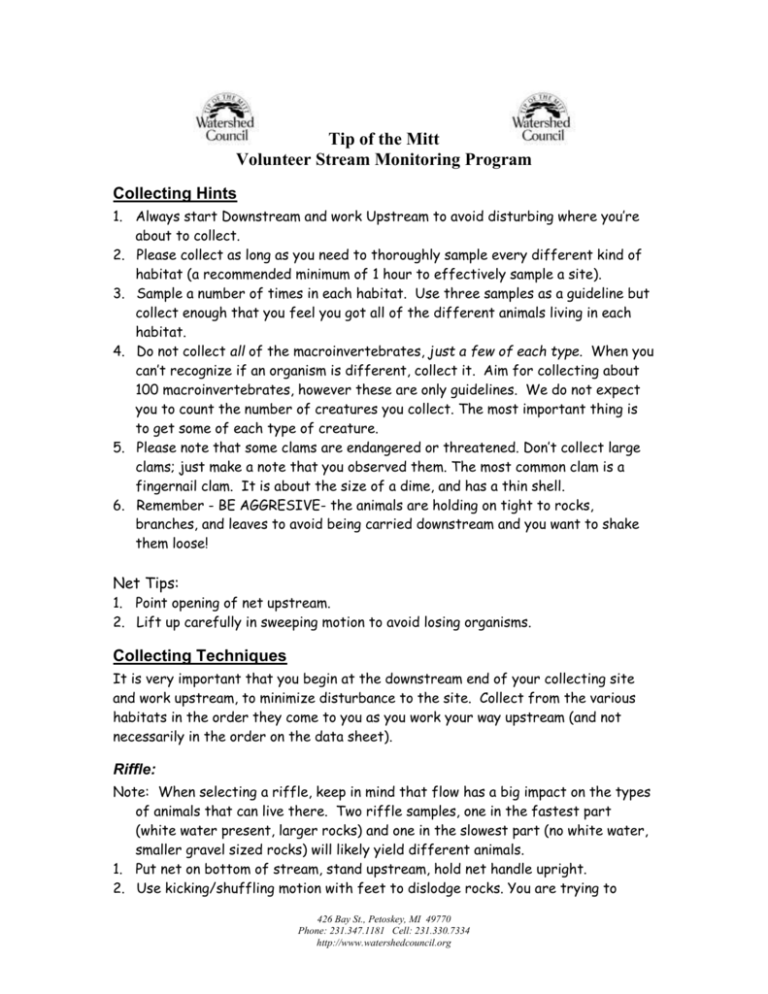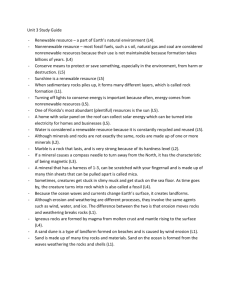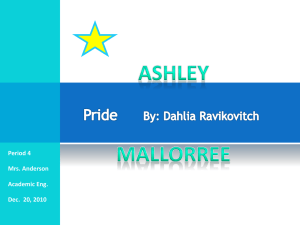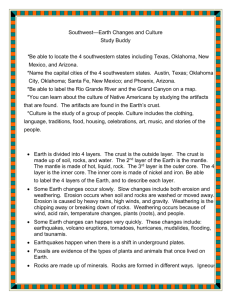File - Tip of the Mitt Watershed Council
advertisement

Tip of the Mitt Volunteer Stream Monitoring Program Collecting Hints 1. Always start Downstream and work Upstream to avoid disturbing where you’re about to collect. 2. Please collect as long as you need to thoroughly sample every different kind of habitat (a recommended minimum of 1 hour to effectively sample a site). 3. Sample a number of times in each habitat. Use three samples as a guideline but collect enough that you feel you got all of the different animals living in each habitat. 4. Do not collect all of the macroinvertebrates, just a few of each type. When you can’t recognize if an organism is different, collect it. Aim for collecting about 100 macroinvertebrates, however these are only guidelines. We do not expect you to count the number of creatures you collect. The most important thing is to get some of each type of creature. 5. Please note that some clams are endangered or threatened. Don’t collect large clams; just make a note that you observed them. The most common clam is a fingernail clam. It is about the size of a dime, and has a thin shell. 6. Remember - BE AGGRESIVE- the animals are holding on tight to rocks, branches, and leaves to avoid being carried downstream and you want to shake them loose! Net Tips: 1. Point opening of net upstream. 2. Lift up carefully in sweeping motion to avoid losing organisms. Collecting Techniques It is very important that you begin at the downstream end of your collecting site and work upstream, to minimize disturbance to the site. Collect from the various habitats in the order they come to you as you work your way upstream (and not necessarily in the order on the data sheet). Riffle: Note: When selecting a riffle, keep in mind that flow has a big impact on the types of animals that can live there. Two riffle samples, one in the fastest part (white water present, larger rocks) and one in the slowest part (no white water, smaller gravel sized rocks) will likely yield different animals. 1. Put net on bottom of stream, stand upstream, hold net handle upright. 2. Use kicking/shuffling motion with feet to dislodge rocks. You are trying to 426 Bay St., Petoskey, MI 49770 Phone: 231.347.1181 Cell: 231.330.7334 http://www.watershedcouncil.org shake organisms off rocks as well as kick up organisms that are hiding under the rocks. Dig down with your toes an inch or two. Do a lil’ dance. Some people use their hands to rub organisms off rocks, but beware of sharp objects on the stream bottom. Quiet Place/pool: 1. Scoop some sediment up in your net. Some animals burrow into the muck. Tip: When your net is full of muck, it is very heavy. To clean the excess muck out of your net: keep the top of the net out of the water to avoid losing animals, then sway the net back and forth, massaging the bottom of the net with your hand. When choosing a soft bottom area, try to find one that contains silt since it is a far more productive habitat than just sand. Undercut Bank/Overhanging Vegetation or Roots: 1. Jab the net into the undercut bank while pulling the net up. Move in a quick bottom to surface motion to scrape the macroinvertebrates from roots. Do this several times. 2. If you notice roots or overhanging vegetation, put the net under the bank at the base of the plants. Shake the vegetation using your net, trying to shake off the animals clinging to these plants. Feel free to use your hands if you are sure the plants are not poisonous. Submerged or emergent vegetation: 1. Keeping the net opening pointed upstream, move the net through vegetation trying to shake the vegetation and catch any animals. 2. Use your hands to agitate the vegetation and dislodge the animals into the net. Rocks/Logs: 1. Small logs and rocks can be pulled out of the water and given to the team to search for animals. Hint for Logs: Be sure to check under bark. Hint for Rocks: Caddisfly homes often look like small piles of sticks or clumps of small gravel attached to rocks. Leaf Packs: 1. Look for a decomposing leaf pack. A “good” leaf pack has dark brown-black skeletonized leaves. Slimy leaves are an indication that they are decaying. Scoop a few into your net and let the team pull then apart and look for animals. 2. Tip: Sometimes a little water in the pan with the leaves will help dislodge the animals. 426 Bay St., Petoskey, MI 49770 Phone: 231.347.1181 Cell: 231.330.7334 http://www.watershedcouncil.org






